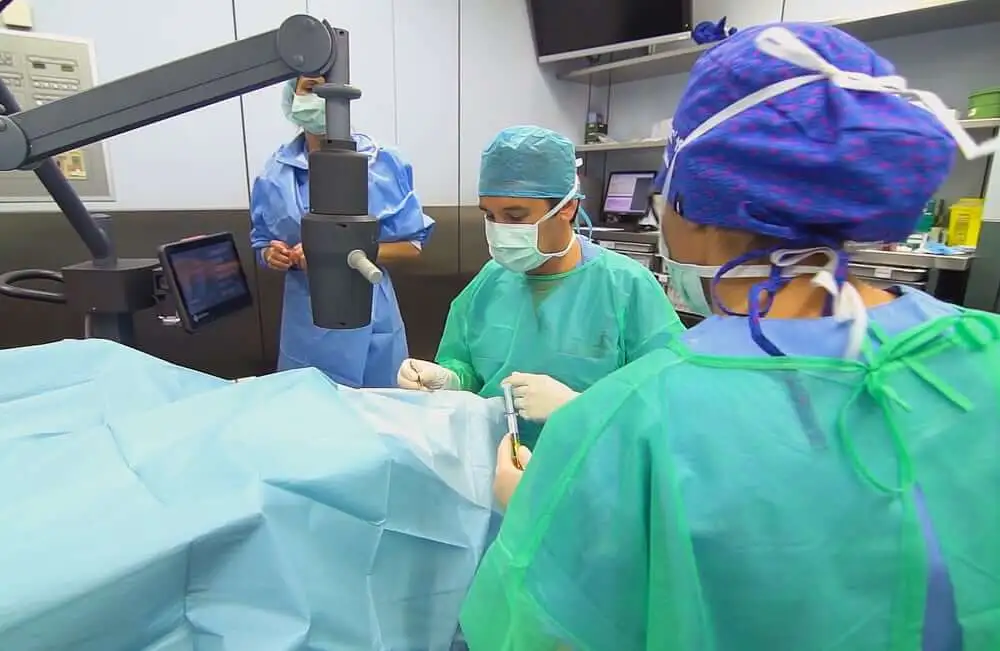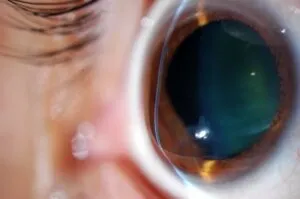Treatments
Corneal crosslinking

What is corneal crosslinking keratoconus surgery?
Crosslinking is a technique that aims to harden the cornea in order to prevent it from deforming. We achieve this by applying riboflavin (vitamin B2) in the form of drops, which is activated when it comes into contact with a beam of low-powered ultraviolet radiation. As a result of this chemical reaction on the eye surface, the links between the collagen fibres that make up the cornea become stronger and the biomechanical strength of this tissue increases.
This is a procedure that we perform in the operating room under local anaesthesia, without the need for subsequent admission to the clinic.
Cases in which we apply crosslinking as a keratoconus operation
Corneal crosslinking, which we pioneered at the Miranza clinics, has made it possible to significantly reduce the number of corneal transplants due to keratoconus, as it allows us to halt the disease in over 90% of cases, preventing it from reaching severe stages. However, if the disease has greatly evolved and is very advanced or the cornea is already very thin due to its thinning (less than 400 microns), we cannot opt for crosslinking and it is necessary to carry out the transplantation.
Crosslinking is also indicated in other types of ectasias or deformations of the corneal curvature, apart from keratoconus.
